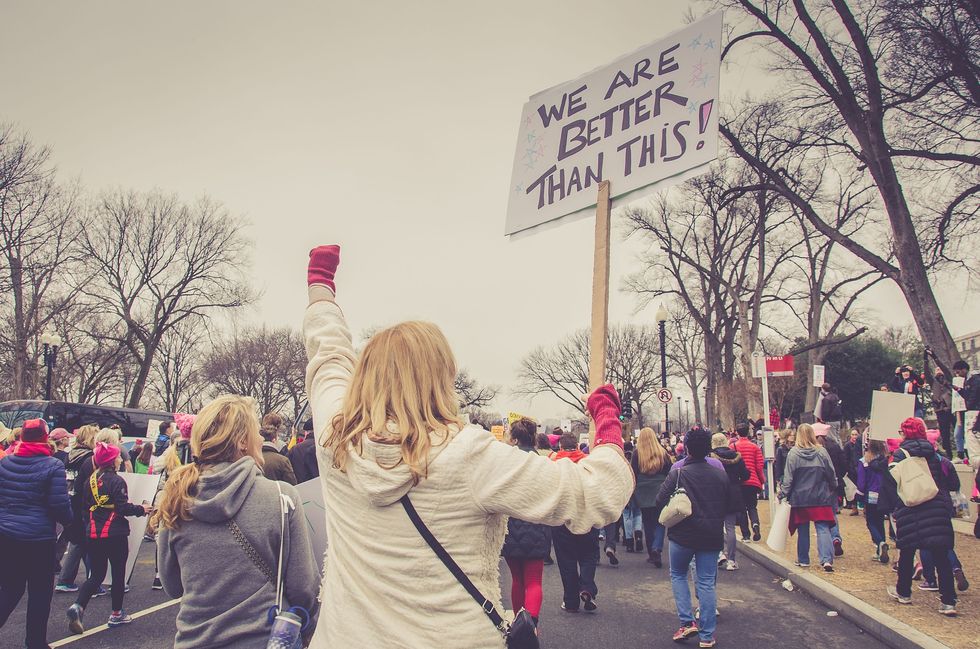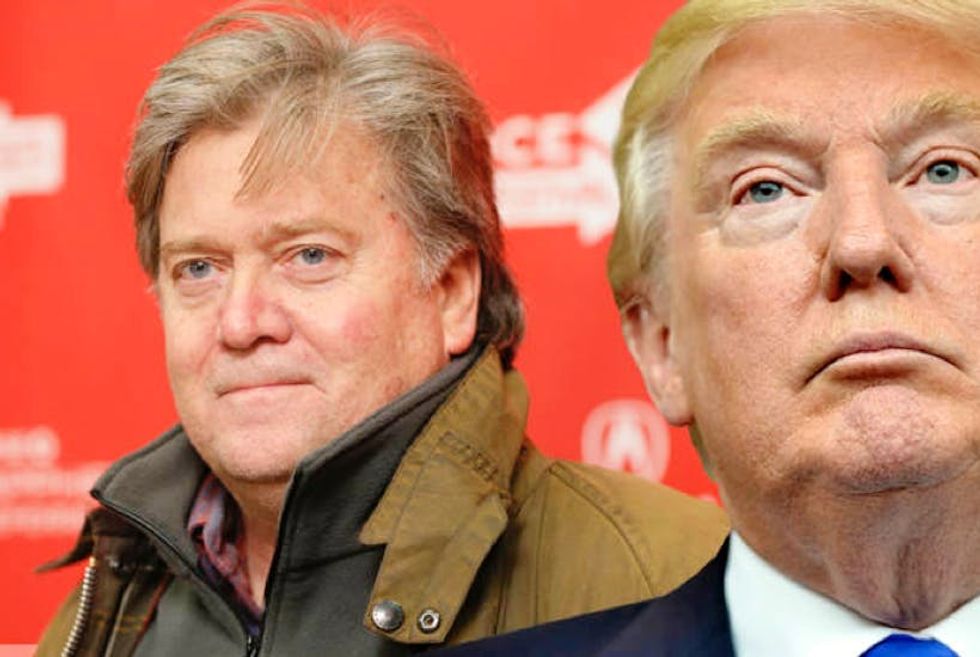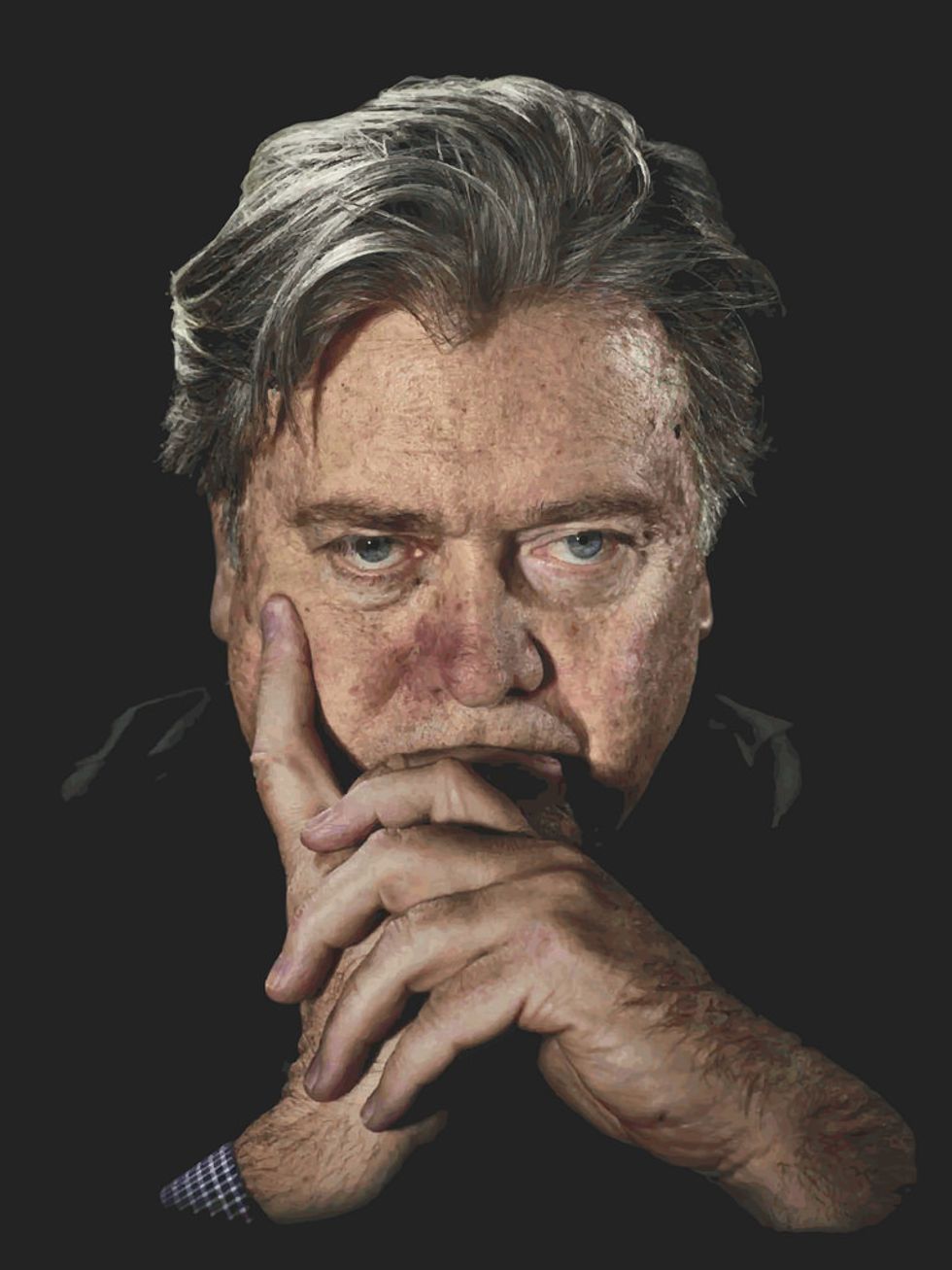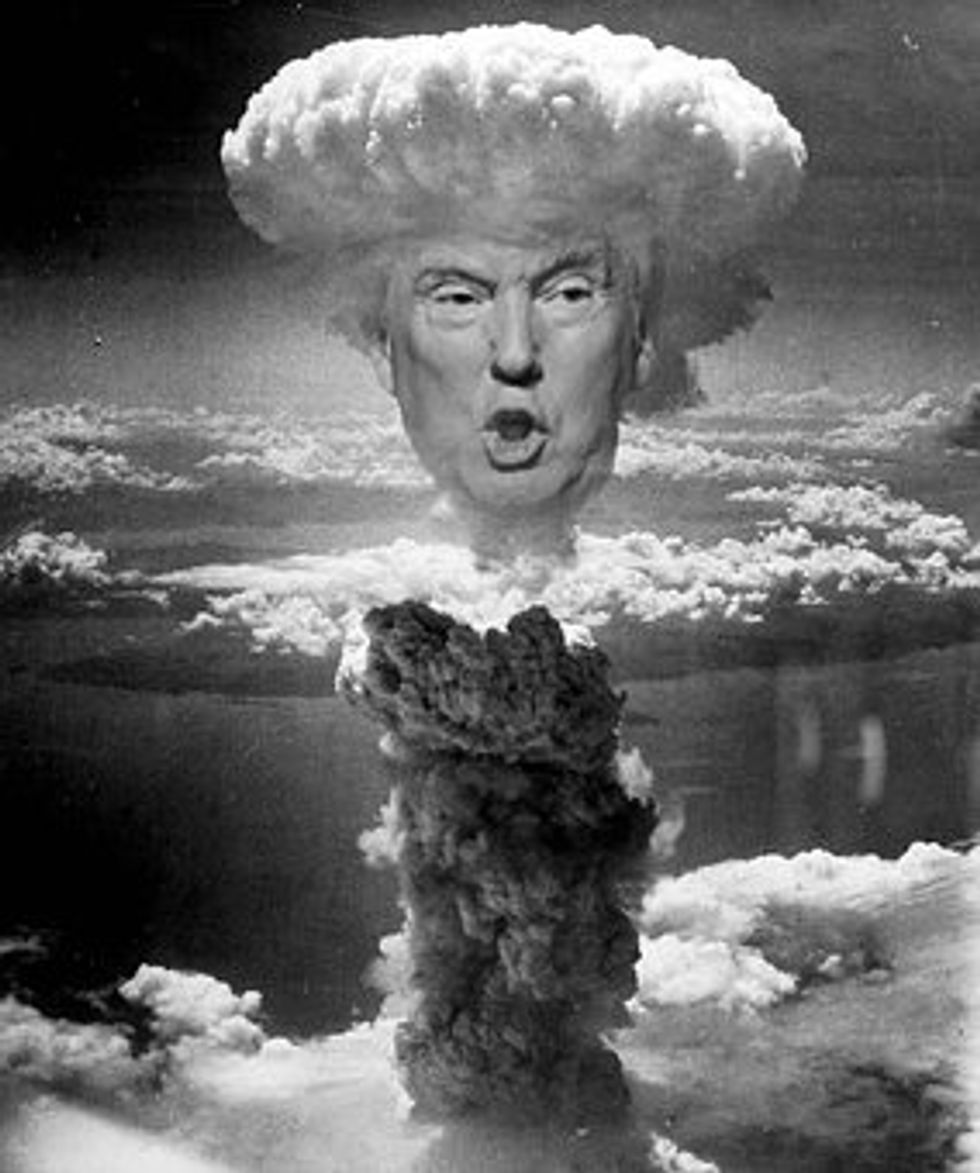The collusion of Donald Trump and Steve Bannon was as unlikely a reality as it was inevitable; the two set on a sequence of dilapidated policy reform that many saw coming, yet few could effectively deter. The two built a castle staked in sands of their success, now among the uncharted. Bannon was named Chief Strategist, despite near-unanimous opposition and concern arose for legitimacy.
The two waged a war on humanism, on logic; the two anointed themselves, successors of their idols, before, contorting logic with a scout's sincerity. All the while, allegations amass a perimeter, the leaden charge battering at the gates. Trouble wakes in paradise, the castle begins to rot.
Through the newly published work by Michael Wolff, "Fire and Fury: Inside the Trump White House" puts Bannon at odds to the presidency, raising allegations towards the presidential children; acknowledging the meeting of Donald Trump Junior with a Russian lawyer to which he references to in labeling the election campaign as "treacherous".
Trump countered:
"When he was fired, not only did he lose his job, he lost his mind."
Aside from a brief exchange at a political event in 2010, Bannon and Trump's paths did not intersect until June 2015, with the announcement of Trump's choice to run for the presidency.
These rallies laden with fear mongering perfection hit a soft spot in many, the promise of simplicity enveloped through fiery prose stood as testament to many; One being Stephen Bannon, who turned his back on the democratic convictions of his father during his time as a naval officer (during the hostage crisis in Iran)and in spite became a supporter of the Tea Party in 2008, the right-wing conspirators of the Republican party.
Bannon was one of those who realized very early that Donald Trump had hit a vital nerve in the rural part of the US with his statements about illegal immigration, a topic often carrying aggressive connotation in tow.
Unbeknownst to the general population, the initial aggregation between the two coalesced on immigration reform laid the foundation to a common enemy. So when it became clear in the spring of 2016 that Donald Trump should win the Republican primary; Bannon held no reservations in unleashing a volley of attacks against his Democratic opponent Hillary Clinton. Trump devoured the reports and used "Breitbart" and other conservative media in his election campaign as a "fact" source.
In August 2016 it was time. When at the height of the election campaign Trump did not stand a chance against former Secretary of State Clinton, he called upon Bannon. His task: to breathe new life into the Trump base. And the right-wing populist delivered.
America's establishment was amazed by the new friendship. Because Trump puts a lot of emphasis on appearance. Bannon, who pushes the belly of a beer coachman in front of him, was the opposite of maintained. "He's a chair-cutter chewed up by fleas and moths," said Joshua Green, a correspondent for the Bloomberg business agency.
Green also had an explanation as to why Trump, in spite of the protestations of his daughter Ivanka, put Trump in his otherwise elitist inner orbit: "He was fascinated by his political instinct."
Even son-in-law Jared Kushner felt repelled. But Clan Father Donald had eaten a fool on Bannon. And soon he listened to him more than his own family. Bannon slipped into a double role. On the one hand, he pulled his strings in the background. On the other hand, he enjoyed his new popularity and flirted with power.
On November 8, the unbelievable happened: Donald Trump won the elections and became the most powerful man in the world.
So while it is surprising that Trump completely downplayed Bannon's involvement in his win last week following the Wolff revelations:
“Bannon had very little to do with the victory in the presidential election,” said Trump. "Steve does not represent my base. It's all about himself. "
Looking at their life stories, it seems almost unreal that Trump and Bannon ever met:
Trump was born into the lifestyle of lavish. He visited expensive private schools, pressed for military service and took over the family business. He became a real estate billionaire, a bankrupt and an entertainer with his own broadcast once again a billionaire. Aside from himself, he loves gold, cars and blondes. In addition, he pays embarrassing attention to an extremely well-groomed social environment. A neo-Freudian wet dream. a logician's nightmare, Trump is the embodiment of the ill-informed, laziness jaded by success; he is an enigma of a simplified world.
The other grew up as a provincial in Richmond Virginia to the middle class. Earning money at a junkyard foraging, he was fascinated with the tales of the old world; of conquerors and warriors who fought for what they owned. A man known for his combative nature, worked his way up the service of the US Navy -- quoted for saying it would look good on his political resume -- to become a Goldman Sachs banker and finally, a conservative pundit turned coincidental media mogul. But also a man who, despite his rise, fueled his platform on the very aggressive and often victimized outlook that he saw in his idols of old.
But back to January 2017: The right-wing populist Bannon enjoyed Trump's favor to the fullest. He went in and out after the swearing in the Oval Office. And while Priebus stayed in Washington again and again at the weekend, Bannon flew with the new president to his villa Mar-a-Lago in Palm Beach.
But the more powerful he felt, the more he began to make mistakes.
In early February, Time magazine appeared with a picture of Bannon on the title and asked: "Is this the second most powerful man in the world?" Satirist Bill Maher etched at the same time: "President Bannon." The marble begins to crack. Bannon begins to reveal himself more as a booster to the narrative of a conservative pundit, maybe even simple Islamophobia.
Trump became suspicious for the first time. He told Bannon to stay in the background. Bannon obeyed, showed less in public. But at the same time he launched one power struggle after another with the advisers of the president. First with Chief of Staff Priebus. Then with chief adviser Jared Kushner. And finally with the new National Security Advisor General HR McMaster. It was the first time it looked like Bannon's days were numbered in the White House. Because on April 5, he lost at the urging of McMaster his permanent seat on the Security Council.
Rumors permeated from outside the keep, billowing along Pennsylvania Avenue, Bannon was preparing to leave the White House. Ironically, the "Alt-Right" was finally the nail in the coffin of the chief strategist. After the riots in Charlottesville, in which a neo-Nazi with a Dodge Challenger had sped into a crowd of human rights activists and killed a young woman, Bannon showed restraint in his remorse for the fallen activist, supporting Trump's original statement as well as explaining in a New York Times interview that Trump had directed the statement towards Antifa, a left-wing social reform group Bannon stated were co-aggressors that day.
His reason: they would give the Trump base "the energy" that had carried him into the White House. And they are the ones who cheerfully cheer him on at events. Trump followed the advice and explained that among the demonstrators "were a number of fine people." America was outraged! After all, these "fine" people had chanted: "Jews will not replace us."
And so President Trump pulled the emergency brake.
Government spokeswoman Sarah Huckabee-Sanders announced on August 18:
After Bannon's expulsion in the US speculated whether the friendship between men was at an end and whether Bannon now against Trump would lead to war. But it turned out differently. At least on the surface. Trump tweeted a friendship statement: "I want to thank Steve Bannon for his service. He came to my campaign when we marched against crooked Hillary Clinton - it was great. Thank you S. "
Bannon continued to support his former boss. Whenever the Republican Party refused to follow him, as in health care reform, he attacked them. They would get the bill in the 2018 elections.
And in a TV interview, he explained his relationship with the president.
Although government spokeswoman Huckabee-Sanders did not want to confirm this, the president said on 16 October at a press conference in the Rosen Garden: "I have a very good relationship with Steve Bannon. Steve has been my friend for a long time. I like him very much. Steve does what he thinks right. "
Once again in November, Donald Trump still trusted the right-wing populist instinct.
Numerous Republican senators had warned the president not to campaign for Senate candidate Roy Moore in Alabama. Reason: Moore is suspected of having sexually molested girls between the ages of 14 and 17 in his past.
Bannon, on the other hand, was one of the vociferous supporters of the scandal-judges. And so Trump listened to his old strategist and called on the voters: "We need Roy." The judge lost the election. And this in a state that had not sent a Democrat to Washington for a quarter of a century. It was the last time Trump believed in his "friend".
The friendship suddenly became enmity. Although Bannon tried to save what can be saved, he said, "Trump is a great man... I still support him day in, day out."
But he missed him on Twitter a nickname: "Sloppy Steve." A clear indication that he will not forgive his once-comrade again.
The tenor in the US media, meanwhile, is clear: The friendship between men was never more than the partnership between two opportunists. Both have tried to use the other for their own interests - and that's over, for now.









 The minimum wage is not a living wage.
StableDiffusion
The minimum wage is not a living wage.
StableDiffusion
 influential nations
StableDiffusion
influential nations
StableDiffusion












